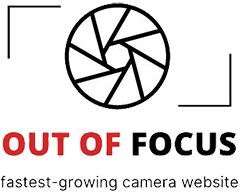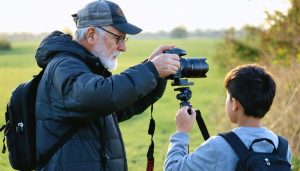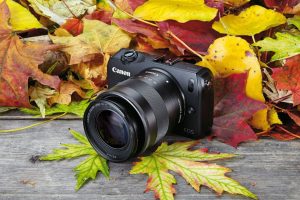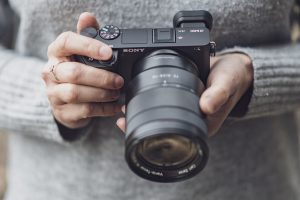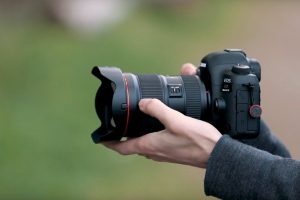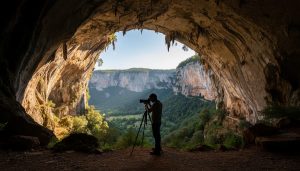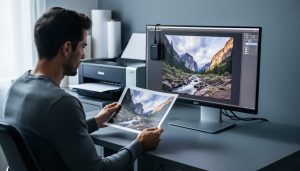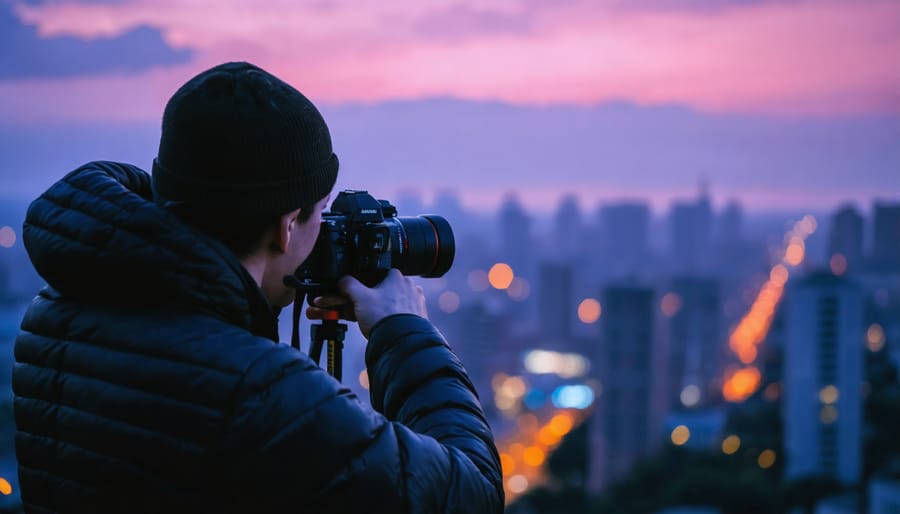
Photography challenges test even the most seasoned professionals, transforming routine shoots into powerful photography learning experiences. From mastering complex lighting conditions to capturing fleeting moments, each obstacle presents an opportunity for growth and innovation. Technical hurdles like achieving perfect focus in low light, managing diverse exposure requirements, and maintaining consistent quality across varying conditions demand both expertise and adaptability. Yet it’s often the creative challenges—finding unique perspectives, developing a distinctive style, and pushing beyond conventional compositions—that truly define a photographer’s journey. Whether shooting landscapes at dawn, managing large group portraits, or documenting fast-paced events, success requires a blend of technical proficiency, artistic vision, and problem-solving skills. Understanding these challenges isn’t just about identifying problems; it’s about developing systematic approaches to overcome them while maintaining creative integrity and professional standards.
Technical Mastery Challenges
Low-Light Performance Trials
Low-light photography presents some of the most demanding challenges in the field, pushing both photographers and their equipment to their limits. When shooting in dim conditions, cameras struggle with achieving proper exposure while maintaining image quality. The primary hurdle is finding the right balance between three critical settings: ISO, aperture, and shutter speed.
Raising the ISO to brighten the image introduces digital noise, which can make photos appear grainy and less sharp. While shooting wide open with a large aperture helps capture more light, it significantly reduces depth of field, making it challenging to keep subjects in focus. Slower shutter speeds allow more light but introduce motion blur and camera shake, particularly problematic when shooting handheld.
Modern cameras offer features like image stabilization and improved high-ISO performance, but mastering low-light photography still requires practice and technique. Using a sturdy tripod, experimenting with long exposures, and learning to work with available light sources are essential skills. Understanding your camera’s limitations in dark conditions and planning shoots accordingly can help overcome these challenges and create compelling nighttime imagery.
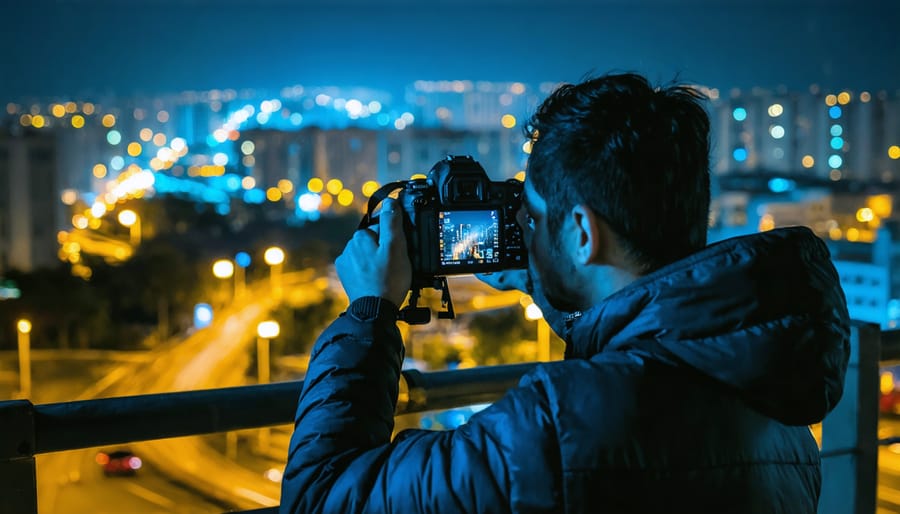
Speed and Motion Capture
Capturing fast-moving subjects presents one of photography’s most exciting yet challenging scenarios. Whether you’re photographing sports events, wildlife, or children at play, mastering speed photography requires a combination of technical skill and quick reflexes.
Start by practicing with predictable moving subjects, like cars passing at a specific point or athletes running a known route. This helps you develop timing and tracking abilities. Set your camera to continuous autofocus (AI Servo for Canon, AF-C for Nikon) to maintain sharp focus on moving subjects.
Shutter speed is crucial – generally, you’ll want to stay above 1/1000th of a second to freeze motion effectively. However, don’t dismiss slower shutter speeds entirely; they can create artistic motion blur that conveys a sense of movement and energy in your images.
Consider using burst mode to capture multiple frames in quick succession, increasing your chances of getting the perfect shot. Position yourself strategically, anticipating where the action will unfold. Remember that proper panning technique – following your subject’s movement smoothly – can make the difference between a blurry mess and a crisp, dynamic image.
Complex Composition Scenarios
Complex composition scenarios present some of the most challenging yet rewarding opportunities in photography. When faced with multiple subjects or competing environmental elements, photographers must carefully balance various compositional elements while maintaining visual harmony.
Consider photographing a bustling city street: you might have pedestrians moving at different speeds, architectural elements drawing the eye in various directions, and dynamic lighting conditions all competing for attention. The key is to identify your primary subject while finding ways to incorporate secondary elements that enhance rather than detract from your main focus.
Environmental elements like trees, buildings, or weather conditions can either work for or against your composition. For instance, when photographing landscapes with both mountains and water, use leading lines created by shorelines to guide viewers through the frame. In urban settings, try using architectural elements to frame your subjects naturally.
One effective strategy is to break down the scene into layers, addressing each compositional element separately before bringing them together cohesively. Look for patterns, symmetry, or natural frames that can help organize multiple elements within your frame. Remember that negative space can be just as powerful as filled areas in creating balanced compositions.
Creative Expression Hurdles
Theme Interpretation Struggles
One of the most challenging aspects of photography is translating abstract concepts and emotions into tangible, visual representations. Many photographers find themselves struggling to bridge the gap between their creative vision and the final image, particularly when working with intangible themes like love, fear, or solitude.
Consider a photographer tasked with capturing the concept of “hope” – how does one photograph an emotion that has no physical form? This challenge often leads to frustration as photographers attempt to find symbolic representations or visual metaphors that effectively communicate their intended message without becoming cliché or obvious.
The struggle intensifies when working on conceptual projects or photo essays where maintaining thematic consistency is crucial. Photographers must carefully consider every element within the frame – from composition and lighting to color psychology and subject matter – to ensure each image contributes meaningfully to the overall narrative.
Another common hurdle is balancing personal interpretation with universal understanding. What might seem like a clear representation of “freedom” to the photographer could be interpreted differently by viewers, leading to disconnects between artistic intent and audience reception.
Success in theme interpretation often comes through experimentation and refinement. Start by creating mood boards, studying symbolic imagery, and developing a clear vision before shooting. Remember that even master photographers sometimes require multiple attempts to effectively translate abstract themes into compelling visual stories.
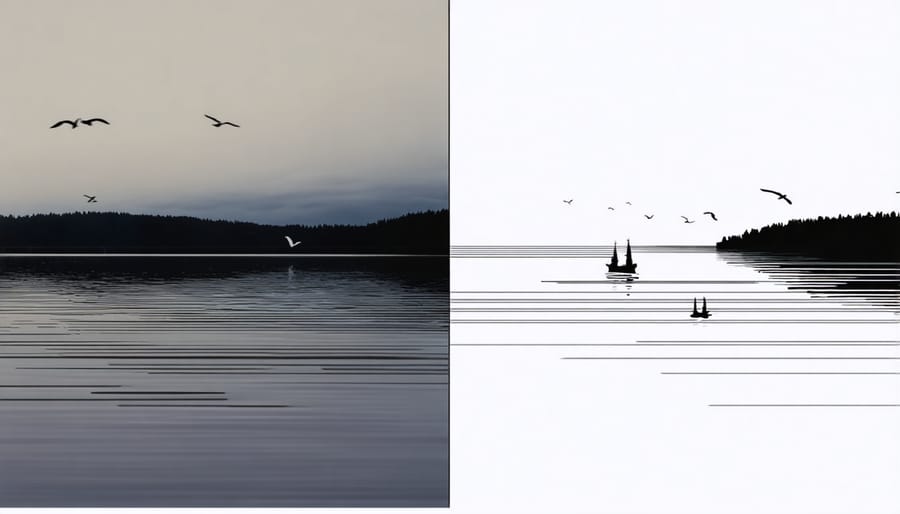
Style Development Pressure
Finding your unique style while collaborating with others can feel like walking a creative tightrope. Many photographers experience the pressure to conform to popular aesthetics or match their team’s established look, especially when working on group projects or client assignments.
This challenge often manifests when shooting weddings as part of a photography team, contributing to stock photography collections, or participating in shared exhibitions. You might feel compelled to adjust your signature high-contrast black and white style to match your colleague’s bright, airy approach, or tone down your experimental compositions to align with a client’s conservative preferences.
However, maintaining individuality while being a team player isn’t impossible. Start by clearly communicating your creative vision during project planning stages. Share your portfolio and discuss how your unique perspective can enhance the overall project. Look for opportunities to complement, rather than copy, your teammates’ styles.
Consider creating designated sections within group projects where individual creativity can shine. For instance, in wedding photography, one photographer might handle traditional formal portraits while another captures candid moments in their signature style.
Remember that your unique perspective is valuable. The best group projects often succeed because of their diversity, not despite it. Focus on finding the sweet spot between maintaining your artistic integrity and contributing meaningfully to the collective vision.
Group Dynamic Challenges
Competitive vs. Collaborative Balance
In the photography world, the line between competition and collaboration can often become blurred. While healthy competition can drive innovation and push photographers to excel, the true magic often happens when photographers come together in collaborative photography projects that elevate everyone involved.
Finding this balance starts with understanding that success in photography isn’t a zero-sum game. When photographers share techniques, locations, or even clients, the entire community benefits from the collective growth. Consider joining local photography groups where members can both compete in friendly challenges and work together on shared projects.
The key is to approach competition as a tool for personal growth rather than a means to outdo others. For instance, participating in photo contests can help you benchmark your skills and identify areas for improvement, while simultaneously connecting you with peers who share your passion.
Many successful photographers maintain both competitive and collaborative relationships with their peers. They might compete for clients or awards while also sharing equipment, assisting on shoots, or mentoring newcomers. This dual approach creates a rich, supportive environment that fosters both individual excellence and community growth.
Remember, your greatest competition should always be yourself from yesterday, not the photographer next door. By maintaining this perspective, you can harness the benefits of both competitive drive and collaborative support.
Feedback and Critique Management
Receiving and giving feedback is an integral part of growing as a photographer, yet it can be one of the most challenging aspects of the craft. Learning to accept constructive criticism without taking it personally requires developing a thick skin and maintaining a growth mindset. Remember that even seemingly harsh feedback can contain valuable insights that help improve your work.
When receiving critique, focus on listening actively rather than defending your choices immediately. Take notes, ask clarifying questions, and give yourself time to process the feedback before implementing changes. Participating in online critique circles can provide a supportive environment to practice both giving and receiving feedback.
When offering critique to others, be specific and constructive. Instead of saying “I don’t like this photo,” explain what specific elements could be improved and suggest practical solutions. For example, “The composition might be stronger if you moved the subject away from the center” provides actionable feedback the photographer can use.
Remember to acknowledge the positive aspects of an image before suggesting improvements. This approach helps create a balanced dialogue and maintains the photographer’s confidence while encouraging growth. Whether you’re on the giving or receiving end, approaching feedback with professionalism and empathy ensures a productive exchange that benefits everyone involved.
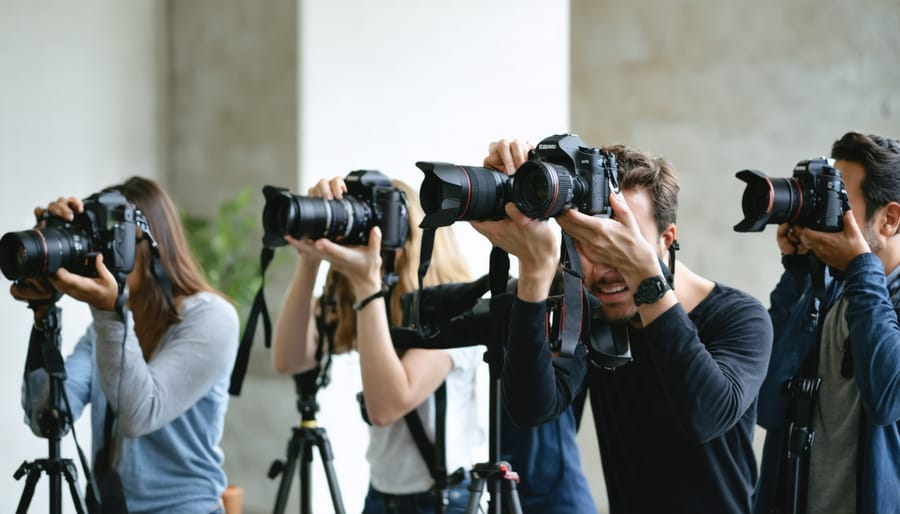
Problem-Solving Strategies
Preparation Techniques
Success in photography often comes down to proper preparation. Start by thoroughly checking your equipment the day before a shoot – charge all batteries, format memory cards, and clean your lenses. Keep backup gear ready, including spare batteries and cards, as Murphy’s Law tends to strike at the worst possible moments.
Research your shooting location in advance. Understanding the lighting conditions, weather patterns, and potential challenges of your chosen spot can help you plan accordingly. For outdoor shoots, check sunrise/sunset times and weather forecasts. For indoor locations, scout the available light sources and potential compositional elements.
Create a shot list or mental roadmap of the images you want to capture. This helps ensure you don’t miss crucial shots while managing time effectively. Consider carrying a small notebook to jot down exposure settings that work well in challenging situations – this becomes a valuable reference for future shoots.
Master your camera’s settings before heading out. Practice adjusting exposure, focus, and other key settings in various conditions. Understanding how your equipment performs in low light, bright sunlight, or fast-moving situations will help you react quickly when opportunities arise.
Finally, develop contingency plans for common challenges. Have indoor alternatives ready for outdoor shoots, bring portable lighting for dark venues, and keep basic problem-solving tools handy. Remember, thorough preparation gives you the confidence to focus on creativity when it matters most.
Adaptation Skills
Success in group photography settings often hinges on your ability to adapt quickly and think on your feet. Whether you’re shooting a wedding with changing weather conditions or managing a large corporate event, developing strong adaptation skills is crucial for delivering consistent results.
Start by building a flexible mindset that embraces unexpected challenges as opportunities for creativity. When plans change suddenly, having backup locations, equipment, and shooting strategies ready can save the day. For instance, if outdoor lighting conditions become unfavorable, knowing how to quickly transition to indoor settings while maintaining your creative vision is invaluable.
Communication plays a vital role in adaptation. Being able to clearly articulate changes to both clients and other team members helps maintain professionalism and trust. Many photographers are now expanding their adaptability through virtual group shoots, which require different skill sets but offer unique opportunities for collaboration.
Resourcefulness is equally important. Learn to work with available materials and locations, even if they’re not ideal. This might mean using reflective surfaces for impromptu lighting solutions or transforming mundane spaces into interesting backdrops. Keep a “emergency kit” with versatile tools that can help you tackle unexpected situations.
Remember that adaptation isn’t just about technical solutions – it’s about maintaining composure and leading by example. When you stay calm and solution-focused, you help create an environment where creativity can flourish despite challenges.
Photography presents its unique set of challenges, but these obstacles often lead to the most rewarding creative breakthroughs. Throughout this article, we’ve explored various technical and artistic hurdles that photographers commonly face, from mastering complex lighting situations to developing a distinctive creative voice. Remember that every professional photographer started as a beginner, facing these same challenges.
One of the most effective ways to grow as a photographer is to connect with others who share your passion. Photography groups and communities offer invaluable support, constructive feedback, and opportunities for collaborative learning. Whether online or in-person, these communities provide a safe space to ask questions, share experiences, and learn from others’ successes and mistakes.
Don’t let challenges discourage you from pursuing your photographic journey. Instead, view them as stepping stones to improvement. Consider joining a local photography club, participating in online forums, or attending workshops to expand your skills and network with fellow enthusiasts. The photography community is known for its supportive nature, and you’ll find that many experienced photographers are eager to share their knowledge and help others overcome similar obstacles they once faced.
Remember, the best photographs often come from pushing through challenges and stepping outside your comfort zone. Keep learning, stay curious, and most importantly, keep shooting!
